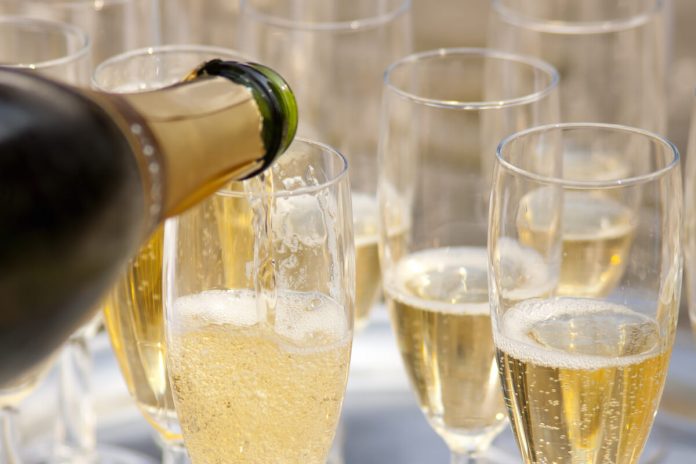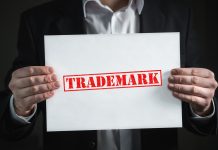This article is written by Vasundhara Thakur pursuing Diploma in Intellectual Property, Media, and Entertainment Laws from LawSikho.
Table of Contents
Introduction
“Remember gentlemen, it’s not just France we are fighting for, it’s for Champagne!”- Winston Churchill.
“This calls for a celebration, where’s my Champagne?” Doesn’t the phrase pop into your head when you hear the word victory? Well, on many occasions, Champagne has been considered as the synonym for the celebration. However, how many of us ever wonder from where this elite drink originates and how it gained all this popularity. Known as the cultural icon, it has a fascinating history, which takes us hundreds of years back. Although wine is produced in many regions and countries, only sparkling wine produced in the Champagne region can be labeled as Champagne. Let’s discuss in depth the protection of the label Champagne as per the TRIPS Agreement.
The TRIPS Agreement (Trade-Related Aspects of Intellectual Property Rights) (hereinafter referred to as ‘the Agreement’) is a basic and a principal agreement of all the member states that provides substantial protection of intellectual property whenever they need it. Also, it provides ample freedom to the member states to implement the provisions of the Agreement within their legal system and practice by determining the appropriate method of implementing such laws.
The purpose of this article is to focus on the origin of the tag Champagne, why & how it acquired the tag, the history of its origin, why it comes under the Intellectual Property law regime & related laws and provisions to it. Also the relevant sections on the special protection of Champagne tag under the TRIPS Agreement. And whether Champagne can be protected under other IP laws like Trademark.
How does the product acquire the tag?
The goods/product, either produced and/or manufactured in a specific region are tagged as geographical indications in the Intellectual Property Laws. geographical indications (GI) are an indication/sign used to specify any product having a specific geographical origin that holds qualities, characteristics, or reputation because of the place of origin or specific region as defined by the World Trade Organisation (WTO). Whereas, the TRIPS Agreement defines it as “an indication which identifies a good as originating in the territory of a member, or a region or locality in that territory, where a given quality, reputation or another characteristic of the good is essentially attributable to its geographical origin” under Part II of Section 3 specifies about the geographical indication wherein, Article 23 provides for the additional protection to ‘Wines and Spirits’ with the exceptions under Article 24 (6).
Likewise, ‘Champagne’ (the wine) has acquired its name based on the region where it is grown, fermented, and bottled i.e., ‘Champagne, France’. Located in the northwestern part of the country near Paris, the only labels which are permitted to legally adopt/use the tag “Champagne” are bottled within 100 miles of this region as per the European law and any use outside of this region is known as Crémant. Apart from the location, Champagne has got its distinguished name because of the grapes that are used to produce it, and the method to produce it is called Méthode Traditionnelle (Méthode Champenoise).
In France, the protection of the GI in Champagne was first introduced by a system called Appellation d’origine contrôlée (AOC). Under AOC it’s unlawful if a manufacturer or seller does not comply with the criteria identified by the AOC to manufacture or sell any product/goods protected under the AOC in a particular region.
History of Champagne
The history of Champagne can be traced back to the seventeenth century. It has been loved throughout history by everyone. While the famous monk Dom Pérignon is credited with discovering the method for putting the fizz in Champagne he wasn’t the first one to discover Champagne. Although, he plays a pivotal role by innovating the process of making Champagne (methodé champenoise) as we know it today. He started the production of wines in the Champagne region in 1668 by inventing the second fermentation in the bottle which was likely to break the wine bottles and perceived as a fault method.
The English scientist and physician Christopher Merrett was actually the first to discover and document the method of putting the fizz into wine in 1662 as this was the way of preserving wines during long voyages at sea. Madame Clicquot, also known as Veuve Clicquot, was at the forefront of innovation, marketing, and export of Champagne. She took over her husband’s business after his death in 1805 and sowed the seeds for global recognition that Champagne has today.
Several organizations were established from time to time to protect the name Champagne. In 1935 Commission of Chalons was established by the French Government, which was later dissolved by the Vichy government and replaced by the Bureau National de Répartition des Vins de Champagne which was replaced by the Comite Interprofessionnel du Vin de Champagne (CIVC), it checks the quality goals and ensures that the consumers get the bottles labeled Champagne. The Champagne houses have been the statutory authority to represent French Champagne Makers since 1919. The main objective of The Institut national de l’origine (INOA) is to prevent the misappropriation of French appellation d’origine worldwide.
Apart from the French laws, the geographical indication of Champagne is also protected by European Law and by international treaties. Like the 2006 Agreement between the United States and the European Community on Trade in Wine which limits the use of the word “Champagne” and other semi-generic terms in the US. The agreement provides that the term was used by the American producers when the agreement signed was grandfathered, which is why some Champagne wines show origination in California.
Today there are over 15,000 growers across Champagnes 35,000 hectares of vineyards with massive size and scale of production, including small local growers and 24 major houses known as Grand Marques that can produce millions of bottles.
Protection of geographical indication
Before the signing of the TRIPS Agreement, the geographical indication was protected under the Paris Convention as “indications of source and appellations of origin”. However, after the Agreement came into force it provides that every member state must provide the legal means to prevent the misuse of GI and misrepresentation of a geographical area than the true place of origin of goods which misleads the public. It also mandates the members to prevent any unfair competition. Also, it provides that the protection to GI must be applied even when any indication which is literally true as to the territory, origin, or locality of goods but is falsely represented to the public regarding the origin of goods. As specified under Article 22.
As defined in paragraph 2 of this article that states that the TRIPS Agreement under Articles 23 and 24(6) specifies the details regarding the special protection to wines and spirits for geographical indication. The Agreement provides prevention of the use of GI identifying to the indication accompanied by true indication, kind or translation, etc.
It also provides for the establishment of a multilateral system of notification and registration of geographical indications for wines eligible for protection to the members participating in the system. Further, Article 24 entitles International Negotiations; Exceptions which were not present in the Paris Convention. In addition to that, the Article also contains provisions of non-diminution or rights, prior use, registration, generics, adverse use, use of a person’s name, and the effect of lack of protection or use in the country of origin.
The TRIPS Agreement also contains special provisions for wines and spirits in connection with the trademark (Article 23 (2)) and homonymous indication.
One of the major issues for providing special protection to wines and spirits under the agreement can be drawn back from the history of Champagne. All the member states have different opinions and perseverance when it comes to tagging intellectual property rights related to the place of origin. For some countries, geographical indications can be protected under the trademark laws as collective or certification marks or as both whereas, in some countries geographical indications have granted sui generis protection. And for other countries, there’s no protection to the geographical indications owners under IP laws as the terms used by them are considered generic and kept out from the regime of trademark laws.
Another factor that leads to this special protection is the conflict between the European Union (EU) and the United States of America (USA). As per the EU’s, the tag Champagne can be provided to the wine produced in the Champagne region of France, whereas, in its counterclaim, the US says that Champagne is a generic term that is used to describe the type of sparkling wine.
In the United States, Champagne is recognized as a semi-generic term as stated under the Lanham Act and as per the Bureau of Alcohol, Tobacco, and Firearms. Considering that the producers in the US are allowed to use the word Champagne till they mention and inform the consumers of the actual place of origin.
Whereas, in the European Union, Champagne enjoys protection as a protected geographical indication. It has been protected since 1967 under the Lisbon Agreement as an “Appellations of Origin”.
So, to deal with these different strategic protections and/or non-protection of geographical indications by the various countries the TRIPS Agreement under Article 23 of the Agreement provides special protection to wine and spirits and in this case Champagne which is produced exclusively in the Champagne region of France. Any misleading geographical indication contrary to what is provided related to wine and spirit must be discontinued, even when there is no evidence of actual confusion among the consumers of these products/goods.
Conclusion
As per the discussions from the above paragraphs, it could be concluded that the TRIPS Agreement provides autonomy to its member states to formulate policies and provisions with regards to IP laws which mandates to assign the mark as per the place of origin of a specific product as geographical indications or as a trademark. Since acquiring protection of geographical indication is not automatic, each member state must first grant the permission for registration of a GI in their countries and any misleading trade name must be prevented from registering or shall invalidate the existing trademark that may deceive the public. geographical indications are an essential tool as they are independent IP from a trademark, they represent the origin of goods and protect the quality of the land and place, it must be protected and should get international recognition.
It is also concluded that all the available literature and the Agreements specifically to protect Champagne (wine and spirits) justifies the present argument for giving special recognition to Champagne. As the quality indicator of Champagne can be traced back to 1700 AD. From the coronation ceremonies of French Royalty to modern-day celebrations, Champagne has acquired a status and has been recognised as a sophisticated and luxurious goods. Owing to its rich history and the indication of its territory.
“Champagne and the name Champagne are protected worldwide; however, the name Champagne goes to the people and the region”. Today, Champagne is a quaint and picturesque area of France, with its rolling hills and beautiful vineyards. However, the region’s rich history has helped pave the way for Champagne to become one of the most renowned and recognised styles of wine all around the world. So, the next time when you celebrate, hope you know where to get that Champagne from.
References
- https://www.wto.org/english/tratop_e/trips_e/intel2_e.htm
- https://www.winecountry.com/blog/sparkling-wine-vs-Champagne/
- https://www.Champagne.fr/en/terroir-appellation/protection-of-Champagne-appellation/protection-where-do-we-stand-today
- https://www.theiplawblog.com/2012/05/articles/trademark-law/where-is-my-Champagne/
- https://www.wipo.int/geo_indications/en/
- https://blogs.loc.gov/law/2016/07/the-protection-of-Champagne-wine/
- https://www.researchgate.net/publication/309121104_A_Case_of_Champagne_A_Study_of_Geographical_Indications
- https://vinepair.com/wine-blog/what-is-cremant/
- https://www.wipo.int/edocs/pubdocs/en/intproperty/464/wipo_pub_464.pdf
- https://dash.harvard.edu/bitstream/handle/1/8852109/Wickes.pdf?sequence=1
- https://www.trademarknow.com/blog/more-than-a-mark-geographical-indications
- https://Champagnegallery.com.au/pages/dom-perignon-the-man-and-the-myth
Students of Lawsikho courses regularly produce writing assignments and work on practical exercises as a part of their coursework and develop themselves in real-life practical skills.
LawSikho has created a telegram group for exchanging legal knowledge, referrals, and various opportunities. You can click on this link and join:
 Serato DJ Crack 2025Serato DJ PRO Crack
Serato DJ Crack 2025Serato DJ PRO Crack











 Allow notifications
Allow notifications



